As the name suggests, the Richtersveld Transfrontier National Park straddles the border between Namibia and South Africa. At first glance, this gem of a place looks quite desolate, harsh, incredibly hot, and dry.
There is some truth in that since some parts of the Richtersveld area receive less than 50 mm (1.98 in ) of rainfall annually, making them hot, dry, and quite inhospitable.
But this area is also home to some of the most unique wildlife you will find in South Africa. The endemic species found here are a source of wonder if you know where to look. Now, let’s get to know the park just a little bit more to see why you should put it on your Safari list.
The Richtersveld Transfrontier National Park
The Richtersveld Transfrontier Park is a park straddling both Namibia and South Africa and is what you would call a peace park. It was formed by combining the Richtersveld National Park in South Africa and the Hot Springs Game Park in Namibia.
The park was officially created after the presidents of both South Africa and Namibia signed a memorandum of understanding in August 2003.
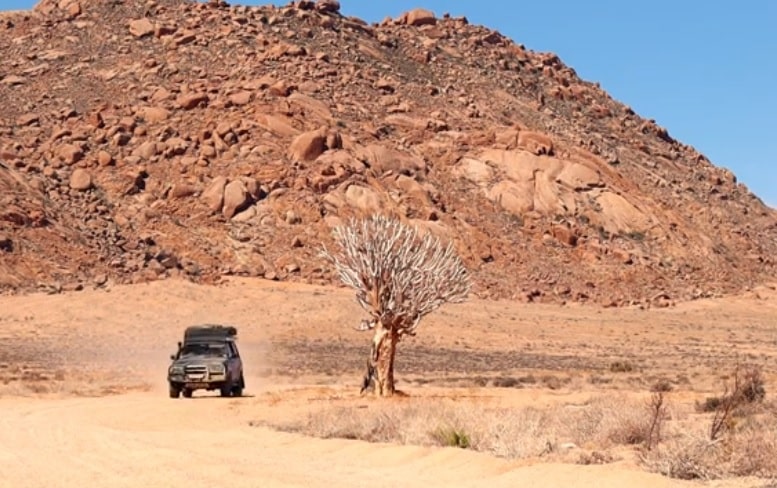
1. Richtersveld National Park
The Richtersveld National Park forms the Southern part of the Transfrontier Park and is located in the northwestern part of the Northern Cape province of South Africa.
Encompassed within the Richtersveld National Park is the Richtersveld Cultural and Botanical Landscape. The park is sort of a buffer zone for the heritage site, which is about 160,000 ha (617.6 mi²) in size.
The park and the heritage site are on land communally owned by the indigenous Nama people. In this area, the Nama people still hold on to their traditions and their pastoralist way of life. The vegetation in the Richtersveld bears witness to the Nama people’s way of life as they have been in the area for more than a millennium.
The world heritage site is to the South of the National park and was inscribed onto the world heritage list in June of 2007. You may ask yourself why the whole Richtersveld National Park area isn’t inscribed on the world heritage list.
Well, along the Orange River in the Northern part of the National Park, mining is still ongoing for precious minerals like Diamonds.
As a result, when you visit, you may find the Southern part of the park which is the heritage site in more of a pristine shape than the North. This is also because the heritage site is managed by the Nama people through a conservatorship.
For the Northern part of the Richtersveld to be considered for inscription onto the World Heritage list, the mining operations have to seize. The mining operations have the potential to destroy both the natural environment and the local culture.
2. |Ai-|Ais Hot Springs Game Park
This forms part of the Transfrontier Park on the Namibian side, and just like the Richtersveld, is one of the richest botanical spots on earth.
The name |Ai|Ais means the place of burning waters, referring to the sulfurous hot water springs found in the park along the Fish River.
There are two major rivers in the park; the Fish River which passes through the aptly named Fish River Canyon ( the second Largest of such canyons on the globe) to the East of the park.
To the South, the Orange River forms the boundary between Namibia and South Africa.

How to get to Richtersveld Transfrontier National Park?
The park itself is in the Northern Cape province and the nearest town is Springbok which is 326 km (202 mi) away.
The main entrance to the park is, Sendelingsdrift which is 300 km (186 mi) away from Springbok.
Sendelingsdrift serves a dual purpose of not only being the entry point to the Richtersveld National Park but also a border crossing point into the Namibian side of the Transfrontier Park.
From Springbok, the most commonly used route is the N7, on which you’ll travel for a distance of about 49 km (30.44 mi), then turn left at Steinkopf. From there, you’ll use the R382 for a distance of 94 km (58.44 mi) to Port Nolloth.
From Port Nolloth, you’ll head North for 85 km (52.1 mi) to Alexander Bay, at which point the tarmac road ends. From Alexander Bay, you’ll head inland for 90 km (55.92 mi) to the park gate.
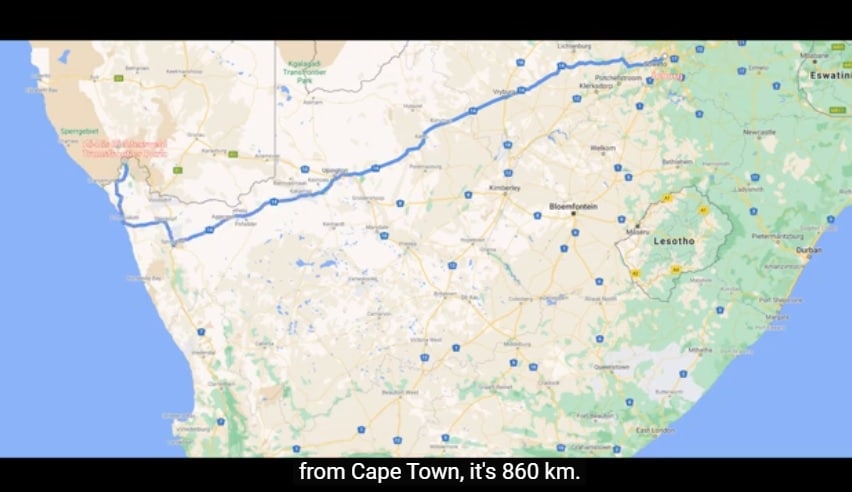
At Sendelingsdrift, you’ll find a restored bridge crossing on the Orange River that has a maximum load capacity of 6t (13,227 lb).
The nearest international airport is located in Cape Town; The Cape Town International Airport, and is about 841 km (522.57 mi).
From there, the options are a taxi or a self-drive to Springbok and then to the park. Alternatively, you can take a flight to Upington, and then take a 4-hour drive to Springbok, this cuts the travel time by more than 1 hour, as a drive from Capetown to Springbok will take about 5½ hours.
The climate and plants of this park
Climate.
The climate of the park can be considered harsh and dry, with extreme temperatures of as high as 53⁰C (127⁰F) being recorded in the summer.
Summer and winter time here occur in opposite to the seasons in the Northern Hemisphere. The summer months are from October to April, while winter runs from May to September.
In winter, day temperatures are moderate, ranging from 6⁰ to 9⁰C (42⁰ to 48⁰F) in the morning, and rising to about 22⁰C (72⁰F) in the afternoons. Night temperatures during winter are low, and will sometimes drop below freezing.
Summer temperatures are mild in the morning, brutal in the afternoon, and pleasant at night. Rainfall in the park varies with location from as low as 5mm (0.19 in ) to a high of 200mm (7.8 in). The Western part of the park receives most of its rainfall during the Winter, while the Eastern part receives most of its rainfall in the summer months.
Along the coast, the temperatures are mild and are moderated by the ocean. The cold Benguela current has an acidifying effect through reducing the amount of precipitation that goes inland as rain.
But the upside is that the current is the source of a thick moisture-laden fog that rolls over the land providing life-giving moisture to the plants and animals. This thick fog is known in the local Nama dialect as ihurries or malmokies. To the North, the Orange River is the only significant and permanent source of water in this dry region.
The Plants in the Park.
The park is part of the Karoo biodiversity biome making it rich in plants that are quite unique, and endemic to the area. One of the reasons why this place is so rich in biodiversity is because it is in a transition zone between Namaqualand and the Nama-Karoo.
There are also three distinct biomes in the Richtersveld National Park; the fynbos biome found on the mountain slopes, the desert biome which can be found in the North and East and the succulent Karoo biome which is the predominant biome of the park.

The geography of the park also leads to the development of a multitude of conditions each with plants specially adapted to them. The plants are so specialized that you may find a certain species that can only be found in a specific spot and nowhere else in the world.
Other than the succulents, most of which are toxic (so don’t go licking anything you find out there), there are Kokerbooms (aloe trees/quiver trees). These trees are a staple of the Richtersveld region, and can be seen on the side of the road or sticking out of rocky outcrops.
The Halfmens plant
There isn’t one type of plant that is ubiquitous with the Richtersveld than the Halfmens plants. There is a local story behind these trees: According to Nama legend, when their people were driven by conflict out of fertile lands in Namibia, they fled to rocky deserts of the South crossing the Orange River.
But for some, the grief and yearning for their home was so great that they stopped to gaze back towards the home they had lost. The gods took pity on them and turned them into “halfmens”, so that they could always have a view of their home.
The Halfmens plant has a large succulent stem just like a cactus, a couple of curved appendages that sprout out from the stem and a head full of leaves.
The plant can be found inclining its head to the North so that its waxy leaves can capture as much sun as possible. They can grow to a height of 5 m (15 ft), and will spring flowers in winter and shed their leaves in the summer. These plants may be the most famous of the Richtersveld rich plant biodiversity, but are quite rare to spot.
The Birds and animals.
Various bird species have been observed in the park, with about 197 bird species having been identified. Most of the park receives relatively low rainfall and can be considered a desert, so most birds are concentrated along the Orange River Delta, mountain ranges and dry river beds.

Some of the bird species spotted in the park include;
- swallows,
- swifts,
- pied kingfisher,
- fiery necked nightjar,
- redknobbed coot,
- swallow-tailed bee-eater
- , dusky sunbird, l
- ong-billed lark,
- mountain chat,
- tractrac chat,
- red-eyed bulbul,
- cape bulbul,
- African hoopoe,
- redchested cuckoo,
- cape bunting,
- Namaqua sandgrouse,
- bokmakierie,
- rock kestrel,
- jackal buzzard,
- cape eagle-owl,
- African fish eagle,
- black-breasted snake eagle,
- black eagle,
- and the lanner falcon.
At the mouth of the Orange River is a fertile marsh that supports several aquatic bird species such as flamingos, great white pelicans, sacred African ibis, Cape Teal, Egyptian Geese, and Cape Cormorants.

Sacred African Ibis
The park is blessed with an abundance of mammalian predators such as the Zorilla( striped polecat), African Wild Cat, Bat Eared Fox, Cape Fox, Black Backed Jackals, Caracal, Aardwolf, Brown Hyenas, several species of antelope and Leopards ( Though these are rarely seen).
Other animals include bats, vervet monkeys, chacma baboons, mongoose, Namaqua tortoise ( the world’s smallest tortoise, with adults measuring about 100 mm (3.9 in) long), Namaqua tent tortoise, angulate tortoise, Nile monitor lizard.
The area doesn’t have an abundance of snake species, but those that are available are deadly and poisonous. These are, a variety of desert adders, and the black spitting cobra.
Want to find the best binoculars for a safari? Check out my blog post here!
The Nama People.
The Nama people are the indigenous inhabitants of the Richtersveld and are still one of the last people in South Africa who still practice a nomadic form of life based on pastoralism.
The Nama are part of the larger Khoikhoi ethnic group, and communally own the entire area on which the Richtersveld National park is situated, apart from a few private lands along the Orange River that belong to mining companies.
The Richtersveld Cultural and Botanical Landscape is one of the last places on the planet where the Nama can continue practicing their transhumance way of life freely without outside interference.
One of the most interesting things about the Nama is their traditional huts. These huts are in the form of a circular dome made up of reed mats on a supporting structure of sticks.
These huts are known as haruoms and are used for a variety of things such as a depot for storage, a kitchen, a place to sleep, and also as an accommodation option for tourists. The Nama have designed these huts in such a way that they stay cool in the heat of summer and are warm in the cold of winter.
The reed stems are porous and absorb rain during the rainy season, and swelling up thus stopping any water from getting in. The huts can also be assembled and disassembled quite fast when the community is on the move.
Activities to do at Richtersveld Transfrontier National Park
Richtersveld 4X4 tracks.
This track takes drivers along the Orange River showcasing the beauty of the Richtersveld region along the way. The track is 200 km (124.27 mi) long but has a variety of tracks crisscrossing it from sandy roads, gravel, and rocky tracks to corrugations. This track does not need a guide, but one is always helpful in taking drivers off the beaten track and into more beautiful locations.
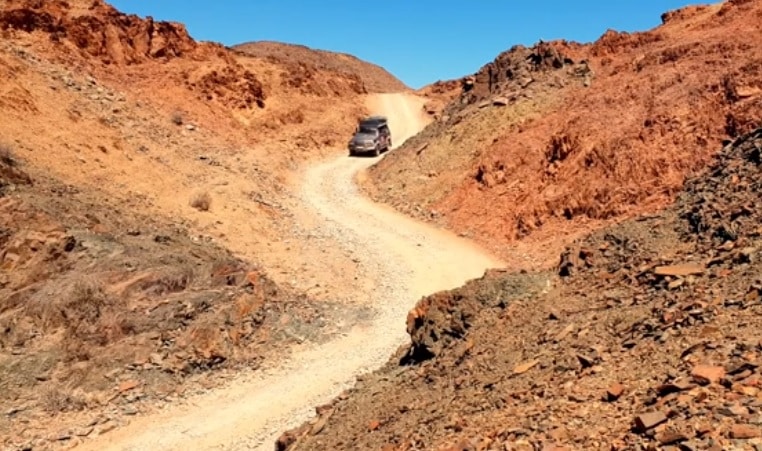
Cycling on the donkey trail.
The Richtersveld National Park is a haven for mountain bikers who not only want a challenge, but an experience in nature that is unlike others.
- Hiking
- Birdwatching
- Fly-fishing in the Orange River.
- River rafting in the Orange River.
- Canoe trip on the Orange River.
Accommodation at Transfrontier National Park
Within the park are accommodation options and campsites, these are:
Sendelingsdrift rest camp.
This camp has 10 chalets, that are self-catering and of different sleeping configurations. Amenities include a swimming pool, while each unit has a two-plate electric stove, fridge, air conditioning unit, showers and most importantly, a front porch view of the majestic Orange River.
Potjiespram rest camp.
This camp is more sparsely furnished with 18 campsites, a common ablution block, cold showers, and traditional Nama huts for groups.
De Hoop Campsite.
De Hoop is one of the more popular campsites, as it is on the river. It has 12 camping sites, with an ablution block, cold showers. At De Hoop, one can swim in the Orange River or even do some river rafting, though you’ll have to come with your own equipment.
Richtersberg Campsite.
This campsite overlooks the river and the Tatasberg mountains on the Namibian side of the Transfrontier park. It has 6 camping sites, with a shared ablution block and cold showers.
Kokerboomkloof camping site.
This is one of the best campsites for photographers due to the unique rock formations around it. The campsite has 8 camping sites, each with a dry toilet. However, there is no water access at the campsite, so you’ll have to bring your own as the nearest water point is about 32 km (20 mi) away.
Tatasberg and Ganakouriep wilderness camps
Both of these camps have 4 self-catering units, with a 12-volt lighting system, gas stoves, fridges, paraffin lanterns, and a resident caretaker on site to help out. Though the water is a bit on the salty side and not suitable for drinking, so you should bring your own drinking water.
Park Fees of Richtersveld Transfrontier National Park
Visitors to the park will pay a daily conservation fee, for every day spent exploring the park.
| Adults ( including children 12 years and older) | Children(2 to 11 years) | |
| South African residents with ID. | R74 | R37 |
| SADC residents with passports. | R148 | R74 |
| Rest of International persons | R296 | R148 |
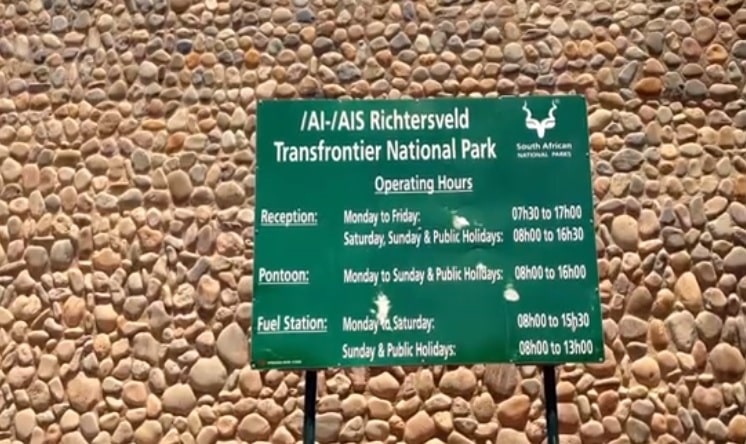
Things To Note On Richtersveld Transfrontier National Park
- The park is quite rugged and to be able to move around freely, a proper 4X4 vehicle is required. You can drive to the park entrance at Sendelingsdrift using a 2-wheel drive vehicle, but to access most of the alternative routes to and from the park, a 4X4 is required. Sedan vehicles may not be allowed access to the park.
- The roads within the park are made up of deep sanded river beds and rough mountain passes, and visitors are advised to travel in convoy when possible.
- The rough terrain in the park can be particularly harsh on tires, so visitors are advised to always have a spare tire in hand.
- The park gets extremely hot during the summer months, and visitors are always advised to have something protecting their heads from the sun and to carry a lot of water.
- The park is home to a number of scorpion species, and visitors especially those hiking are advised to wear closed hiking shoes and to always check the inside of their shoes before putting them on.
- When visiting the park during the winter, have with you warm winter clothes if you plan to spend the night in the park.
- Also for those using personal 4X4, carry with you more than enough petrol/gas, or diesel because the fuelling points can be quite far once you start exploring the park.
- No pets of any kind are allowed within the park confines, except for exceptional circumstances such as guide dogs for the blind, but only after consultation with the park management.
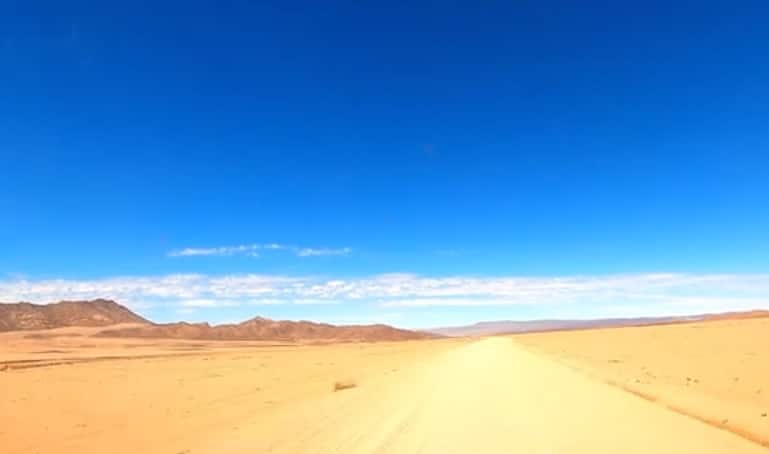
Dirt road desert.
FAQS
- Why was Richtersveld Cultural and Botanical Landscape declared a world heritage site?
The park and the heritage site sustain the semi-nomadic pastoral way of living of the Nama people. The Nama people through their transhumance lifestyle have led to the effective management of the succulent Karoo vegetation. This shows a harmony between the people and the land.
My Final Conclusion.
I hope that you enjoyed this article on Richtersveld Transfrontier National Park and if you have any more questions, please feel free to leave them down below in the comment section or join me on (one of) my social media channels.
I wish you happy travels!
Kind regards,
Lizzy
I now have a YouTube channel as well!
YouTube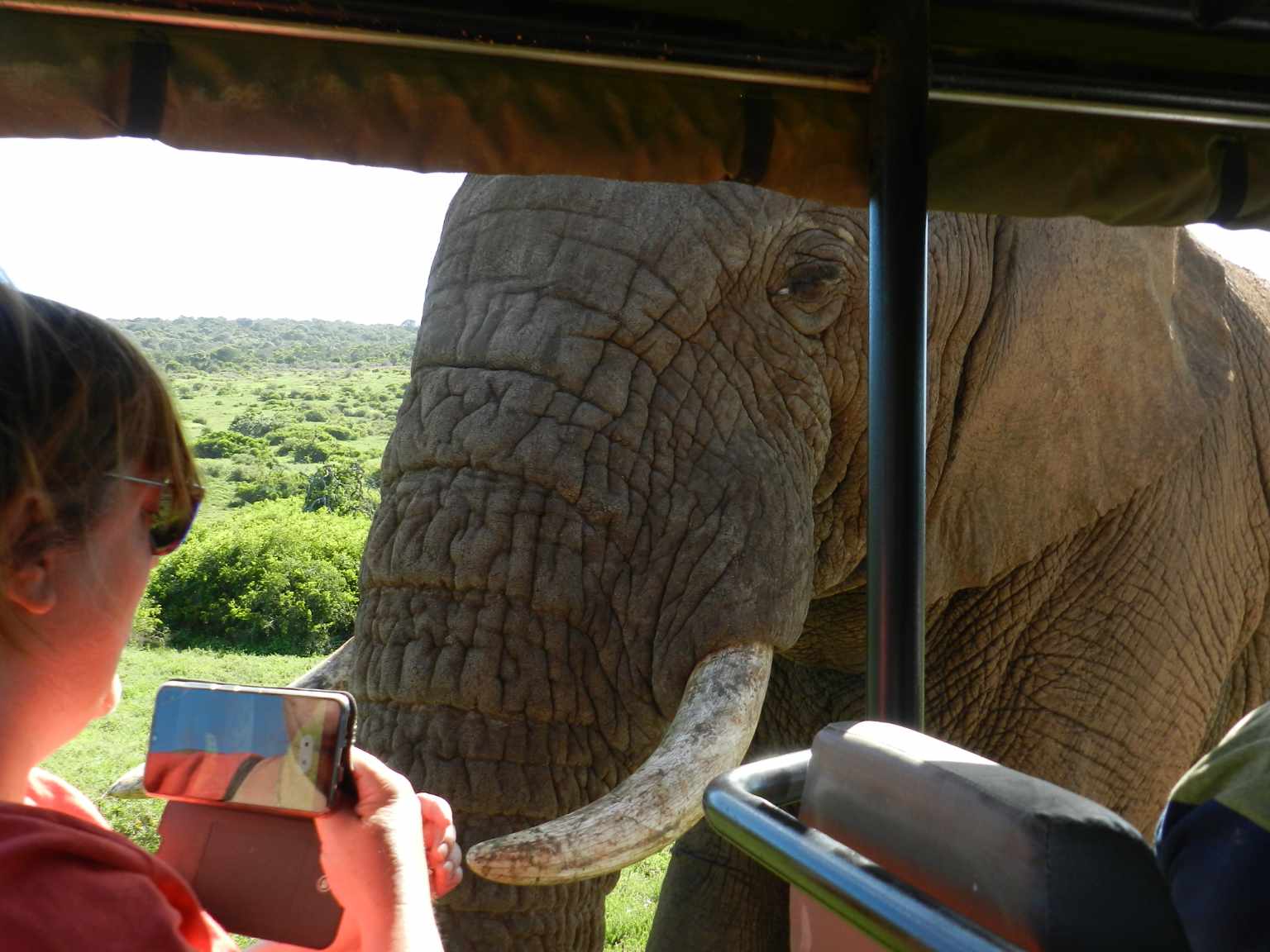
Hello Africa travellers!
Who am I? Well, the least you can say is that I am quite crazy about Africa, its nature, its climate, its culture, and more.
As a young woman in my twenties, I had already traveled to several African countries by traveling along in an overlander on my own and mostly camping ( or glamping ) and just fell in love with the diversity of it all.
So much, so that at the age of 26, I went back to university to study biology, which, unfortunately, I couldn’t finish because of health reasons (yes, I got sick from a tropical disease, oh cynicism). But this did not stop my dream of traveling back to Africa several times, and I still do.
My dream was back then to leave Europe and go study animal behavior, especially the elephants (sure, that’s every girl’s dream haha), but I am also very much intrigued by hyenas and other “ugly African animals“.
So, I “kind of” have a little bit of a scientific approach to my articles, when I write about African birds, for example. And most of all: the passion.
But life goes on, you move from one side of the country to the other, you get sick again and top it off with lower back problems, and before you know it, you are over 50 hahaha!
Now, I still travel to Africa, but take it a bit “easier” than the good old camping days, and stay in comfortable, yet affordable accommodations, together with my husband Wouter.
These are some of the countries I have traveled to: Kenya, Tanzania, Zanzibar, Malawi, Zambia, Zimbabwe, South Africa, Namibia, Botswana, Tunisia, and a little bit of Lesotho LOL .
While clearly not being African territory, but Spanish, I also visited Gran Canaria and Tenerife, and location-wise, I consider them “African”, because of their climate and nature, sue me :-p
The last trip I took was to South Africa in the year 2023, and it sure got the fevers for Africa back! From the Barberton mountains to the Drakensberg and the Southcoast, one month wasn’t enough at all to see the whole country, so we’ll be back! At ease and with a little bit more luxury than in my younger days haha!
I wish you happy travels!
Kind regards
Lizzy


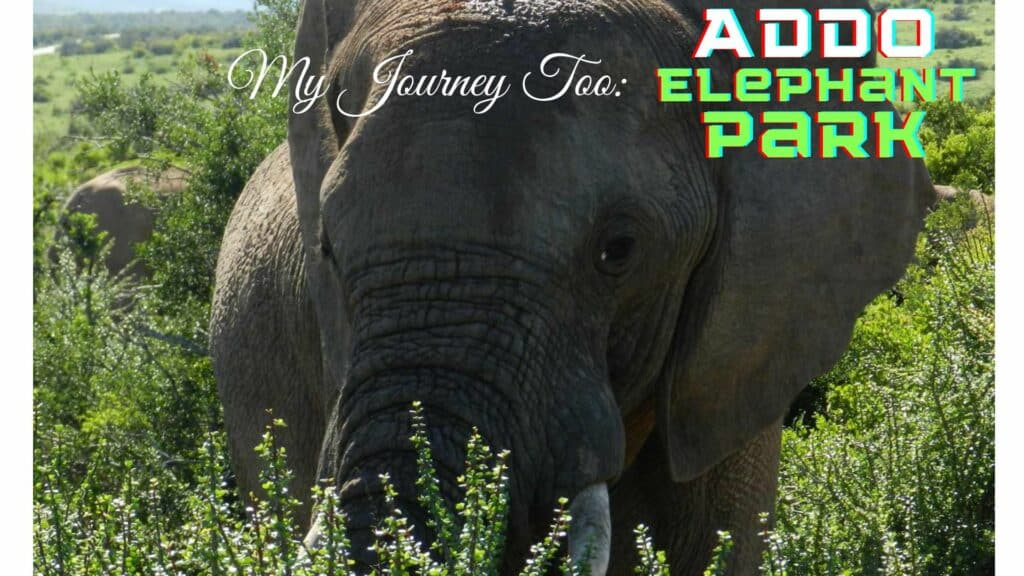
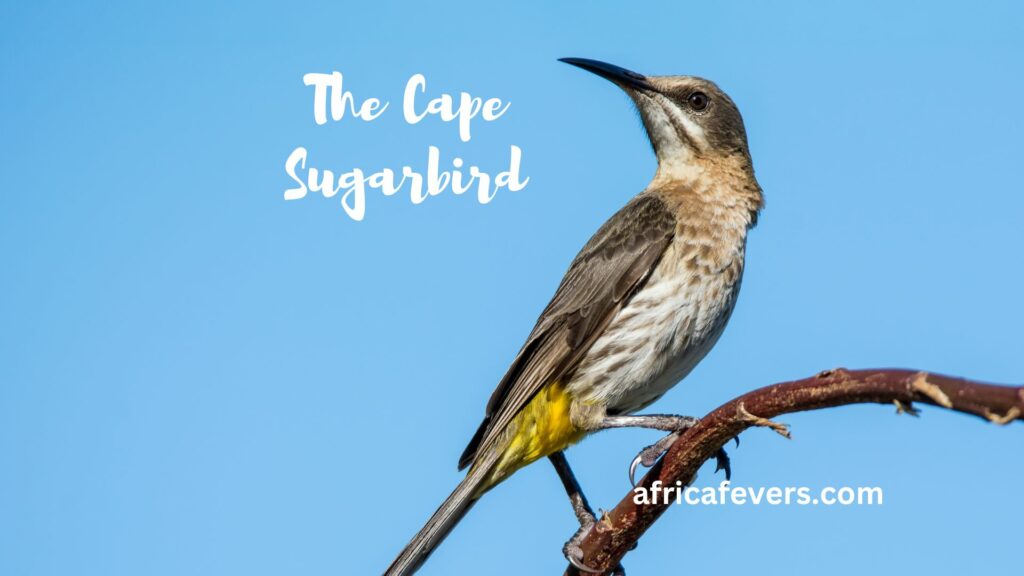
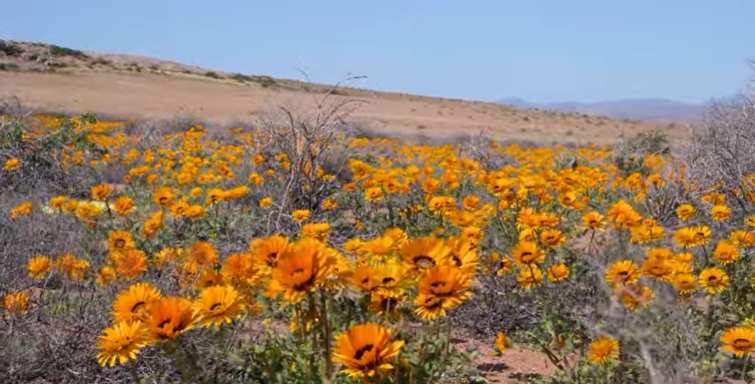
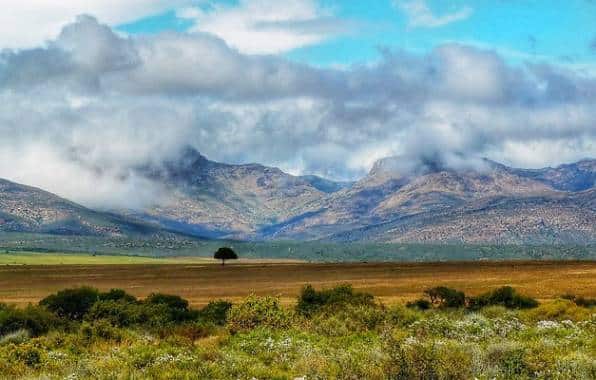

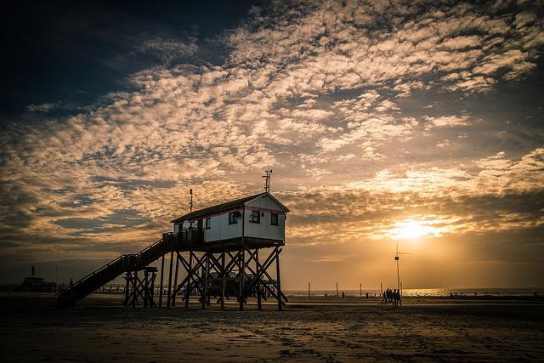

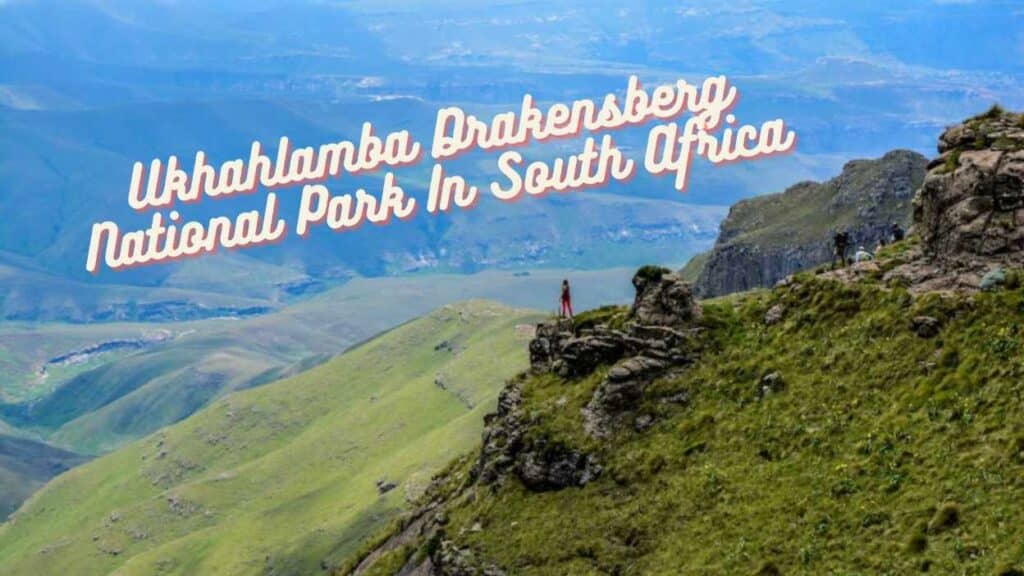
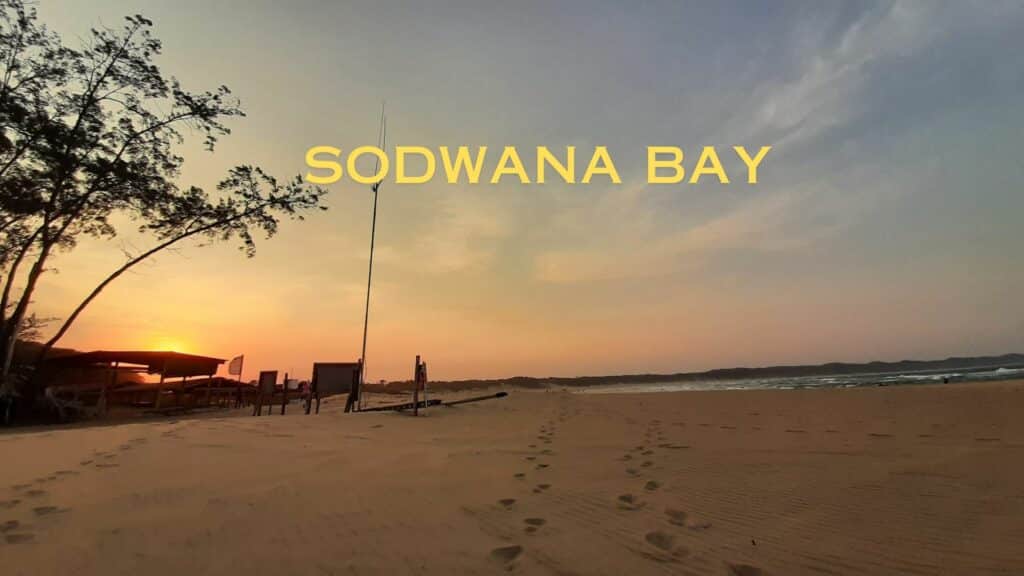
Wow, Lizzy! I live in Cape Town, South Africa and have travelled to the Richtersveld Transfrontier Park. Your article truly paints a vivid picture of this unique and captivating wilderness.
The park has such a rich cultural and botanical heritage. And along with the Nama people’s traditions, it adds an extra layer of fascination to this place. Your story of the Halfmens plant and its connection to the Nama legend is both intriguing and poetic.
Thank you, Lizzy, for taking everyone on this virtual journey and for providing such a comprehensive guide to the Richtersveld Transfrontier National Park. It’s certainly a destination worth adding to everyone’s safari list!
Hi AnaD!
Wow, what a nice compliment from a South African citizen, thank you!
Kind regards,
Lizzy
As someone who loves to travel, visiting South Africa has been on my bucket list for many years. I have visited other countries in Africa such as Egypt and Tunisia however, have never been to the south. Reading this review of the Richtersveld Transfrontier National Park has made me want to visit even more! When I am planning my trip to go here would you recommend leaving more than one day to visit this park? Or would I be able to do this in one day and explore the other wonders of South Africa on the other days of my holiday?
Hello Ebony
Richtersveld Transfrontier Park is quite large and it takes a lot of time to reach it as well, so I would really advise staying a few days to visit everything easily 😉
I wish you happy travels!
Lizzy